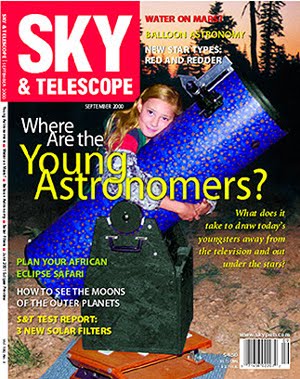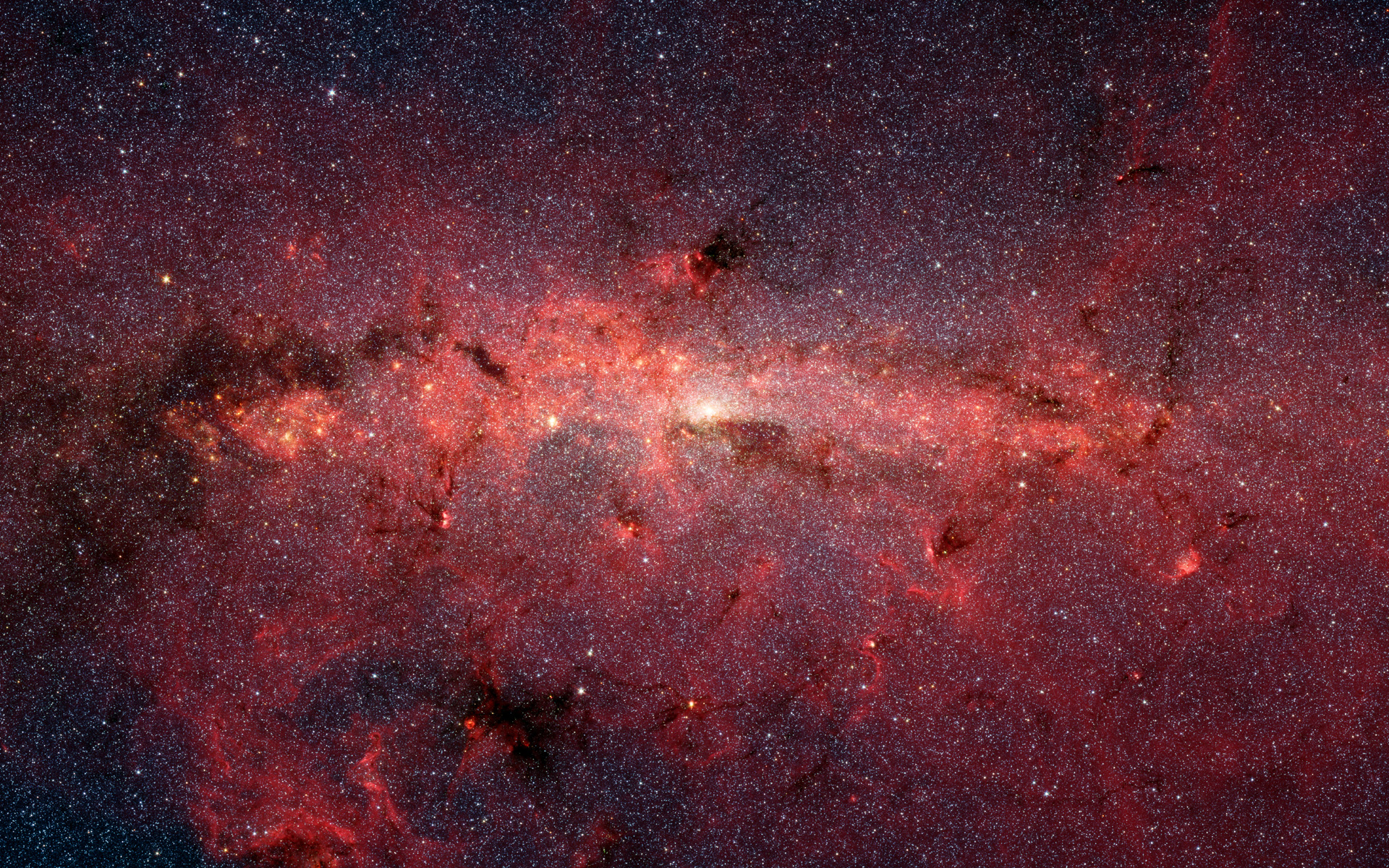 2011 continues to be a sparse year for deep sky observing. As late as the end of June, conditions refused to improve - cold, cloudy, rainy, at least over new moon weekends, when most working folks can get out to dark sites and stay up all night. However, two occasions worked out. The first was the Golden State Star Party (GSSP), in far northeastern California, near the small towns of Adin, Bieber, Nubieber and Lookout. Thanks to Jeff Gortatowski for the great photo at right - Sunset at GSSP, with Mount Shasta on the horizon. Beautiful place!
2011 continues to be a sparse year for deep sky observing. As late as the end of June, conditions refused to improve - cold, cloudy, rainy, at least over new moon weekends, when most working folks can get out to dark sites and stay up all night. However, two occasions worked out. The first was the Golden State Star Party (GSSP), in far northeastern California, near the small towns of Adin, Bieber, Nubieber and Lookout. Thanks to Jeff Gortatowski for the great photo at right - Sunset at GSSP, with Mount Shasta on the horizon. Beautiful place!
That location is in what locals refer to as the Big Valley. If you're old enough, you have visions of Barbara Stanwick and her crew. But this large  open valley, 20 miles wide by 100 miles long, is a real place, with unreal skies. We are fortunate to be able to spend several nights there each year, enjoying country/small-town hospitality, with cultured and bright inhabitant. If it is possible, they outshine the stars in their night skies. If you haven't been to GSSP, look it up for next year.... it is so well organized, with so many conveniences, its like camping in your own backyard, but with the best skies you can imagine.... and all your friends there too. Winner.
open valley, 20 miles wide by 100 miles long, is a real place, with unreal skies. We are fortunate to be able to spend several nights there each year, enjoying country/small-town hospitality, with cultured and bright inhabitant. If it is possible, they outshine the stars in their night skies. If you haven't been to GSSP, look it up for next year.... it is so well organized, with so many conveniences, its like camping in your own backyard, but with the best skies you can imagine.... and all your friends there too. Winner.

I hope to return to Michelle's for a few more nights over the upcoming new moon.
Before starting though, at GSSP I was set up near Dr. Alan Argawal, and Paul Alsing. Alan has a 24" f/3.3 Starstructure, and Paul a 25" f/5 Obsession. The idea was to set up close to some big guns - I observe with an 18" f/4.5 Obsession, and be able to "mooch" some views of challenge targets. Perhaps the most challenging target discussed by my regular observing crew, is Hickson 50. One evening, early on, when The Big Dipper was still in good position, several of us went to Alan and asked to star hop off of M97, to the nearby quarry of Hickson 50. With high magnification (someone will need to remind me what we were using - maybe an 8mm Ethos), in Alan's scope, a faint haze was visible. Several of us confirmed it. Then over to Paul's 25", with the longer focal ratio, the field revealed not only the haze, but what I can describe as "sprites" - pinpoint of light that came and went, within the haze. Two of us felt there were four sprites.
There were many great views at GSSP, but for me, Hickson 50 was the most impressive. Big scopes and dark skies. Works for me!
My raw notes:
Abell 75 Cep PN 67"x47" 14.5 21 26 23 62 53 33 PK 101+8.1 = NGC 7076 = PN G101.8+08.7
Visible with 20mm no filter. 12mm with NPB filter reveals annular disk about 2.7' and round.
Abell 77 Cep PN 67"x50" 14 21 32 10 55 52 43 PK 97+3.1 = Sh 2-128 = PN G097.5+03.1 = LBN 443
Barely visible both with and without filter, both 20mm and 12mm. With VHT filter there appears to be two arcs near a small triangle to the W, one to the N and the brighter to the S.
CRL 2688 Cyg PPN 24"x6" 21 02 18 36 42 00
3.5mm ultra wide Orion without filter reveals a bright embedded star to the N and dimmer star to S within a peanut shaped halo. Very obvious and bright. Stars are actually in bright knots, with dimmer halo surrounding entire N/S combination.
Abell 78 Cyg PN 113"x88" 13.4 21 35 29 31 41 45 PK 81-14.1 = PN G081.2-14.9
12mm w/ultrablock - mostly round, dim, even brightness across disk.. Filter helps, almost not visible without.
Abell 72 Del PN 134"x121" 12.7 20 50 02 13 33 28 PK 59-18.1 = PN G059.7-18.7
12mm w/ultrablock - almost round but slight e/w elongation. Stars involved, bright one at w edge. Solid, even brightness across disk.
Hickson 89A Aqr GX4 0.9x0.6 14.4 21 20 01 -03 55 20 MCG -01-54-012
7mm all three bright components viewed averted, B seemed easier than A. C would come in with a hint of D < 25% of time.
Abell 70 Aql 45"x40" 14.7 20 31 33.2 -07 05 17 PK 38-25.1 = PN G38.1-25.4
12mm 18" - entire disk shows without filter but NE section is clearly brighter. 7mm shows annularity and galaxy visible through NE edge of nebula.
Palomar 11 10.0' 17.3 19 45 14 -08 00 26
12mm 18" - obvious granular appearance and bracketed by 2 concave chains of 4 = mag stars each running N/S with a bright star nearby to the N. Using an NPB filter shows the entire NE triangular portion of the galaxy glowing in HII.
NGC 6822 15.5'x13.5' 8.8 19 45 00 -14 48 NGC 6822 19 45.0 -14 48 15.5x13.5 8.8 Sgr
Barnard's Galaxy has a low, irregular surf br, ~14' in length. Use OIII filter to search for 2 small HII regions at N end. 12mm 18" - elongated NE/SW and embedded in stars, there is a dark rift or two that run along the major axis and several HII regions embedded, most noticeably the two at the NE end of the object.
 SagDIG 3.2'x1.5' 15.0 19 30 00 -17 41 00 SagDIG 19 30.0 -17 41 3.2x1.5 15 Sgr
SagDIG 3.2'x1.5' 15.0 19 30 00 -17 41 00 SagDIG 19 30.0 -17 41 3.2x1.5 15 Sgr
The Sagittarius Dwarf Irregular is a difficult 3' roundish glow nestled in a rich Milky Way field. Very difficult to identify. 7mm 18" - oval glow between parallelogram of stars, elongated NW/SE and appearing almost annular - no doubt it is there.
I've manipulated the contrast and brightness in this image, in order to try bringing out the object. Its a tough one!
Abell 66 Sgr 295"x241" 19 57 31.5 -21 36 46 PK 19-23.1 = PN G019.8-23.7
12mm 18" - Pair of stars equal mag nearby to NNE. Planetary is large and perhaps elongated slightly N/S with slight annularity. Dim stars appear embedded in E edge - perhaps 2. Very faint, although occasionally the central area appears to brighten and negate annular feeling.
Sh 2-052 2 2 19 47 46.3 -23 05 15 See next entry - how many types of catalogs is this in!
Abell 65 Sgr 134"x34" 13.8 19 46 33.8 -23 08 12 PK 17-21.1 = UGCA 415 = MCG -04-46-001 = PN G017.3-21.9 = PGC 63654
12mm 18" - visible without filter, but UHC helps. Round and mostly even brightness, but SW edge seems brighter than rest of disk. Chain of 4 dim stars cup N edge, and 3 dim stars extend W from S edge, with E star touching disk.
ESO 461-007 1.2'.7' 13.3 19 52 06 -30 49 00
7mm 18" observed, aka Hickson 86A
Hickson 86A 1.2x0.7 13.3 19 52 08.7 -30 49 30 63753
Hickson 86B 0.5x0.4 13.8 19 51 59.0 -30 48 57 63748
Hickson 86C 0.4x0.3 14.9 19 51 57.3 -30 51 23 63752
7mm 18" observed.
Terzan 8 3.5' 12.4 19 41 45 -34 00 01
12mm 18" - forms an almost equilateral triangle with GSC 7434:401 and GSC 7434:31, but feeling is I'm seeing the core as it is relatively small and not all that difficult.
ARP 29 11.6'x9.9' 8.8 20 34 52 60 09 NGC 6946
Large core with two arms coming off to NE and swinging E. S of the 2 arms is fatter. Dimmer arm comes off S of core and swings tightly around to W. Large core has a gradually brighter center. Finally noticed another long arm, from WNW and winding around straight to NE.
Abell 71 Cyg 165"x150" 14.5 20 32 23.2 47 21 04 PK 85+4.1 = PN G084.9+04.4 = Sh 2-116
7mm 18" - very dim glow, no definition at all, surrounding a mag 13.5 star with more "glow around a mag 12.5 star on the edge. Extremely difficult. Dim star actually appears involved in a haze.
Sh 2-115 50 2 20 34 33.0 46 52 40
12mm UHC 18" - dim linear glow with some structure running E/W of two pair of stars to the S. Dimmer pair appears involved in nebulosity. OC Berk 90 is obvious at E of the two pair of stars.
Sh 2-112 15 2 20 33 50.2 45 39 35
12mm UHC 18" - easy to view this Sharpless around GSC49801. Nebulosity forms an arc through the star, running mostly N/S and arcing to the E, forming a J with most but thinnest section to the N. Bottom of J is most pronounced.[
AGC 2319 0.973 15.4 19 20.8 43 59
7mm 18"- CGCGs 230-9, 230-8, 230-7, 230-4
Sh 2-108 180 3 20 22 34.8 40 15 15 IC 1318
30mm 18" - nebulosity with dark neb veined throughout over large areas around Gamma Cygni, through into the North American Nebula. Outstanding views throughout the entire area.
Abell 69 Cyg 25"x22" 20.2 20 19 58.3 38 24 02 PK 76+1.1 = PN G076.3+01.1
7mm 18" - perhaps at most the southern arc of this planetary, very elusive.
Sh 2-105 18 3 20 12 02.4 38 20 59 N6888 = Crescent Nebula
12mm 18" UHC - spectacular view, wispy nebula with blue glow and blue stars. Internal knots inside western edge, northern and eastern edge very thick and distinct. Mottling throughout. Star embedded in northeastern wisp is very reminiscent of Veil Nebula's Witches Broom.
Sh 2-106 3 3 20 27 26.9 37 23 49
12mm 18' UHC - amorphous glow involved with dark veins interspersed in distinct star field just NNW of SAO 70038. Subtle, but there.
Sh 2-104 7 2 20 17 44.6 36 44 40
12mm 18" UHC - faint but distinct even nebulosity surrounding stars of Dolidze 4, elongated E/W, with a notch taken out of the NW edge.












1 comment:
LOVE LOVE LOVE the photos!
I love black and white photos of deep sky objects. Makes me want to take my scope and binocs outside/ 2:12 am here .. so great time to observe!
Post a Comment